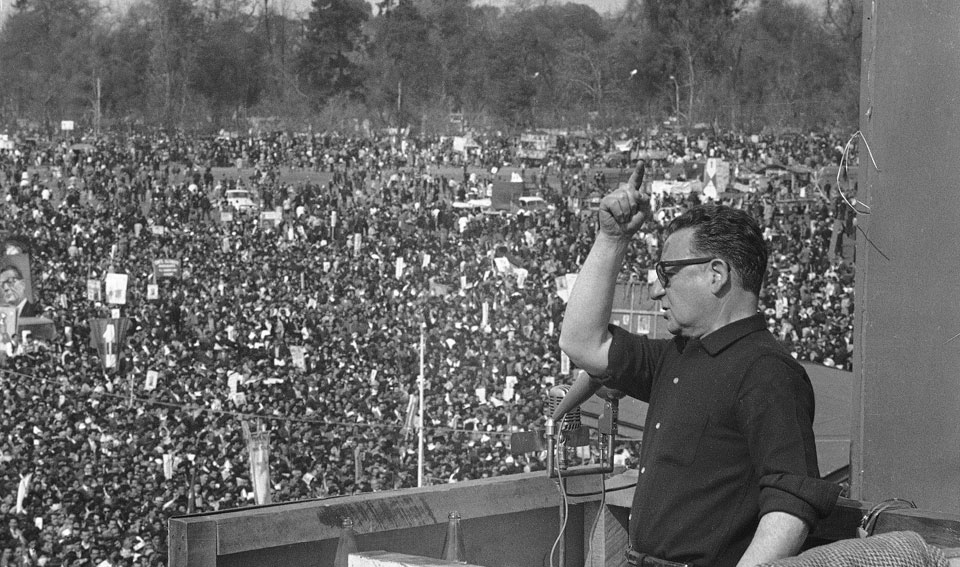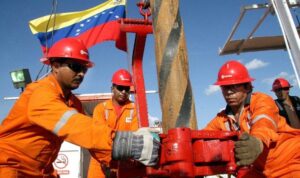
Published 12/09/2023 12:53 | Edited 09/12/2023 15:47
On the morning of September 11, 1973, Hawker Hunter jets bombed the La Moneda presidential palace in Santiago, Chile. Hours later, Chile’s elected head of state, President Salvador Allende, was dead.
Soldiers raided working-class neighborhoods across the country and arrested left-wing activists. Around 40,000 were imprisoned in Chile’s National Stadium, awaiting interrogation. Many faced torture and imprisonment, others were executed. Hundreds of other militants simply “disappeared”. Allende’s Popular Unity government was replaced by a military junta headed by General Augusto Pinochet.
The experience of Popular Unity and its dramatic and bloody end are covered in a recent book by Praxis Press, 1000 Days of Revolution. This book contains nine chapters, each written by a prominent Chilean communist as part of his party’s attempt to self-critically analyze the weaknesses of Popular Unity. These articles were originally published in the Prague-based World Marxist Review and later released as a book in 1978. Now it is back in print for the first time since.
The Chilean experience was a sustained attempt to move towards socialism through an unarmed strategy based on a constitutionally elected government. The failure of Popular Unity was often considered by its left-wing critics as definitive proof of the impossibility of such a path.

Other commentators from the then-powerful Eurocommunist current reached opposite conclusions, emphasizing instead the need for a pure “democratic path” to socialism, which would seek compromise and consensus among mass political forces and traditions, rather than by through the intensification of class conflict.
The conclusions presented in this volume reject both of these views. Specifically, they emphasize the confirmation of two fundamental insights of Marxism.
First, that the left cannot simply take control of the government and state machinery of the existing ruling class and use it for other purposes. Second, that no successful revolutionary movement can succeed unless it manages to consolidate and maintain a political majority in society.
Left-wing critics of Popular Unity tend to emphasize the first factor and reformist critics the second. In reality, they are complementary elements and are fused in all revolutionary processes. Popular Unity’s defeat was due to its inability to resolve these issues.
The main economic changes carried out by Unidad Popular, mainly the nationalization of the copper sector, caused a shock on Wall Street and in the White House, where it was feared that the Chilean experience would be repeated elsewhere unless it was stopped – at any cost .
Starting with just 36% of the vote in the 1970 presidential election, Popular Unity faced constant challenges in creating and maintaining a political majority. This was not an arithmetical challenge, but a political one, as communist theorist Volodia Teitelboim emphasized.
“We have already said that the peaceful path is only practicable if the idea of revolution captures the minds of the majority of the people and leads them to act. When the forces favoring change achieve overwhelming superiority, there remain no opportunities for a reactionary uprising, much less for its success.”
The creation of Popular Unity was a remarkable achievement, bringing together Marxists, radicals, secularists and Christians. However, as Gladys Marin points out in her chapter, “one of the main problems of the Chilean revolutionary process was that no solid and homogeneous revolutionary leadership was created.”
The unity of the communist and socialist parties was more advanced and established longer than in most other countries. However, differences in emphasis, rhythm, and direction emerged; Sometimes they were resolved successfully, but other times they became a source of friction.
The nature of the Chilean revolutionary process itself was debated. While many members of the Socialist Party and other left-wing groups saw Chile as a fully socialist revolution, Chilean communists classified the initial stage of the revolution as “national-democratic.”
This meant that, to begin with, revolutionary measures should not be directed against private property in general, but rather against foreign imperialism and the domestic oligarchy, whose monopolistic exploitation of the economy pitted them not only against the working class and the peasantry, but also against the middle strata and even against sections of the petty bourgeoisie.
It was necessary to make efforts to overcome these forces or, at least, neutralize them.
Christian Democrats won more than a quarter of the vote (28%) in the 1970 presidential poll and were influential among these middle strata. They maintained significant working-class influence, with just over a quarter of the total votes polled in the main trade union federation in 1972, but their leadership also had close ties to big business.
The vacillation of the middle strata is also illustrated by the fact that two successive divisions of the left of the Christian Democrats, the MAPU in 1969 and the Christian Left in 1972, entered Popular Unity.
In the opposite direction, the Radical Party suffered splits from the right to the opposition.
Initially, Christian Democrats confirmed the presidency of Salvador Allende and supported the nationalization of the copper sector. However, in 1973, the Christian Democratic leadership had allied itself with the far-right National Party.
Despite increasing difficulties, in the March 1973 parliamentary elections, Popular Unity obtained 44% of the vote, preventing the center-right bloc from obtaining the two-thirds parliamentary majority needed to remove Allende.
Orlando Millas writes: “At a time when we had only partially gained power, it was essential to democratize all fields of activity, to carry out far-reaching measures of democratization in economic management, to extend democracy to the judiciary and the control machine, to achieve a balance of forces in favor of democracy among the military and align the administrative system with genuinely democratic standards.
“In this aspect, we stopped halfway. The Popular Unity government failed to establish effective democracy in decisive areas. His achievements, while impressive and noteworthy, were clearly inadequate.”
In Washington, “Committee 40,” made up of President Richard Nixon, national security advisor Henry Kissinger, CIA representatives and others, met to discuss US interference in Chile.

Pedro Rodriguez observes: “In Chile, imperialism did its utmost to destabilize the popular government. From an economic point of view, it resorted to a financial and technological blockade. With the help of Chilean financial clans, he mounted a desperate opposition within the country, boycotting production, leaking currency abroad and speculating with capital.”
When Popular Unity’s electoral defeat proved impossible, counter-revolutionary forces turned decisively to military action.
In Teitelboim’s opinion, “’peaceful transition’ is a correct term only insofar as it excludes civil war, but, because of the many vicissitudes, it cannot circumvent the law that says violence is the ‘midwife’ of history.”
“We should always have kept this in mind, we should have remembered that the very act of changing path presupposes ‘changing horses’ and continuing our advance.”
The fall of Popular Unity was, first and foremost, a political defeat; subsequent military coups occurred only after the creation of the political atmosphere that allowed the coup to succeed.
The General Secretary of the Communist Party of Chile, Luis Corvalan, noted: “Since 1963, the party had been giving military training to its members and striving to acquire enough weapons to defend the government that we were confident the people would establish, but this did not was sufficient, because our activity in this direction was not accompanied by the main thing, that is, persistent and sustained propaganda to give the popular movement a correct attitude towards the military.”
It would be wrong to consider Chile’s experience in 1970-73 as an illustration of all the possible challenges that left-wing governments will automatically face from the right. However, there are enough common characteristics to encourage the current generation of activists to study the past. 1000 Days of Revolution sets out to do this.
1000 Days of Revolution: Chilean Communists on the Lessons of Popular Unity 1970-73 is available from Praxis Press in the UK.
Article published in People’s World, https://www.peoplesworld.org/article/chiles-1000-days-of-revolution-a-marxist-analysis-of-the-all
__
*Kenny Coyle is the author of several themed pamphlets, YouTube videos, articles for the theoretical magazine Communist Review, as well as articles for the Morning Star, the English-language socialist daily newspaper.
(BL)
Source: vermelho.org.br

